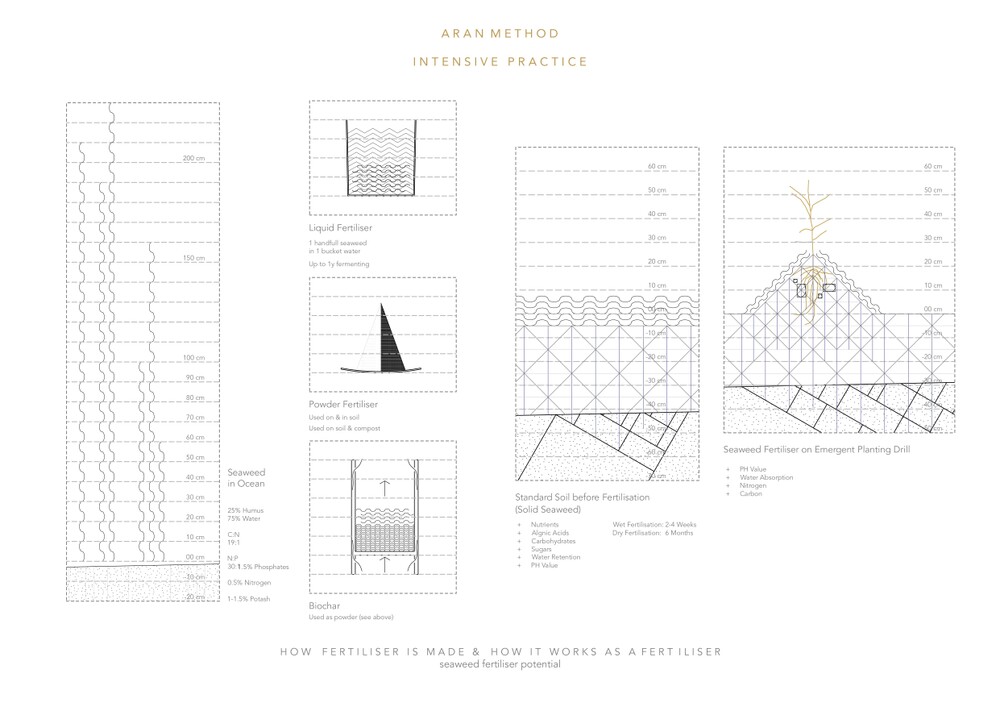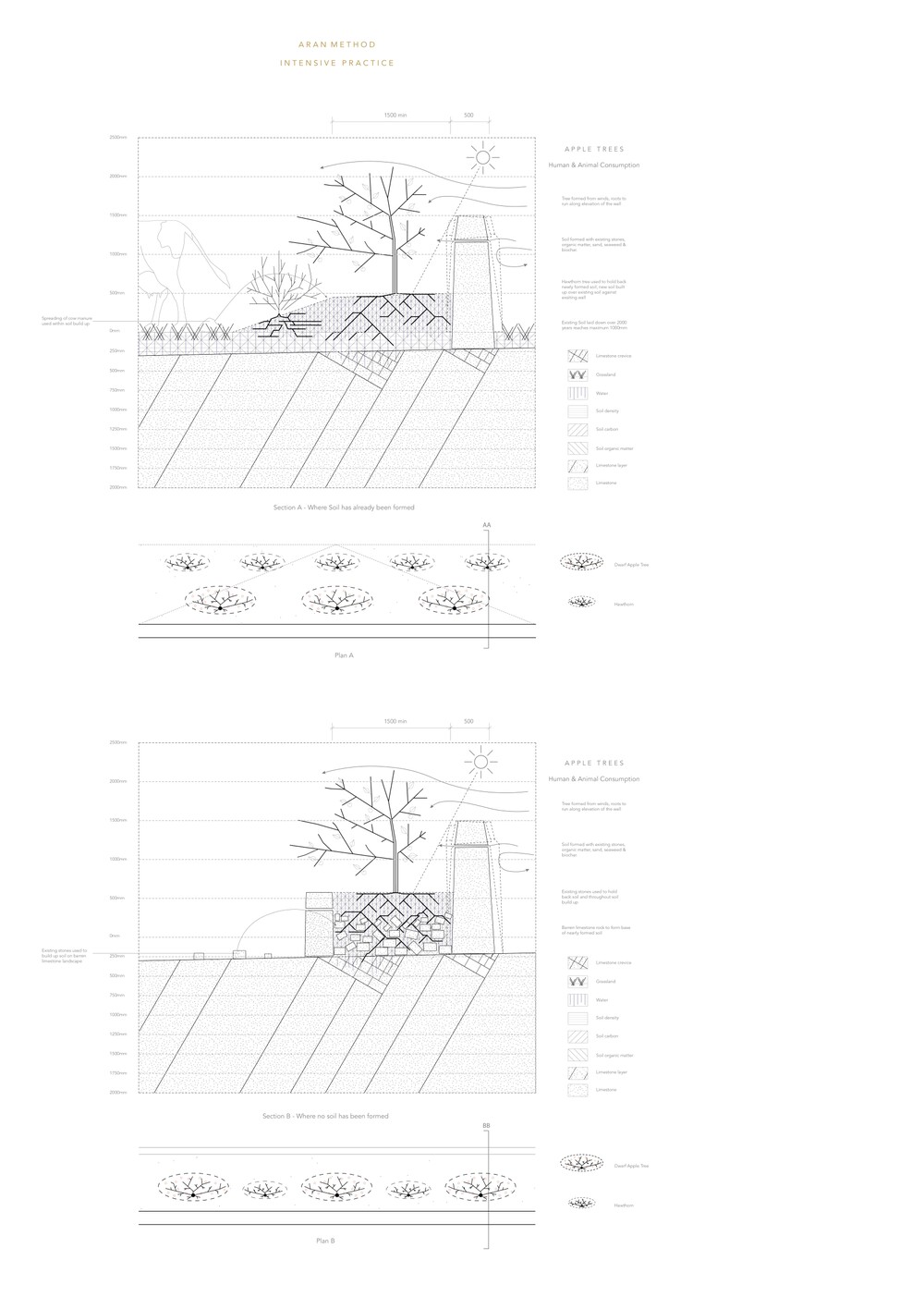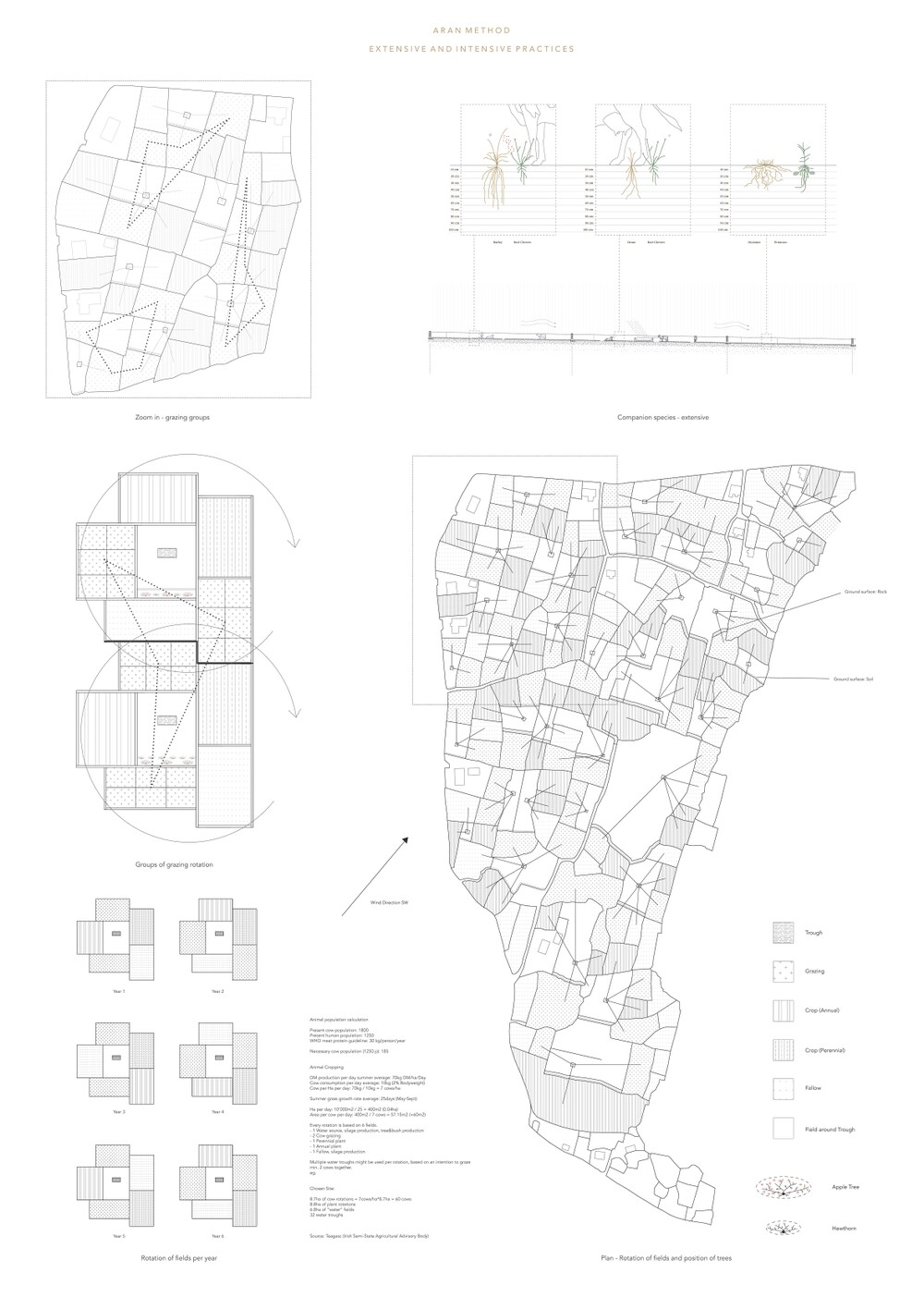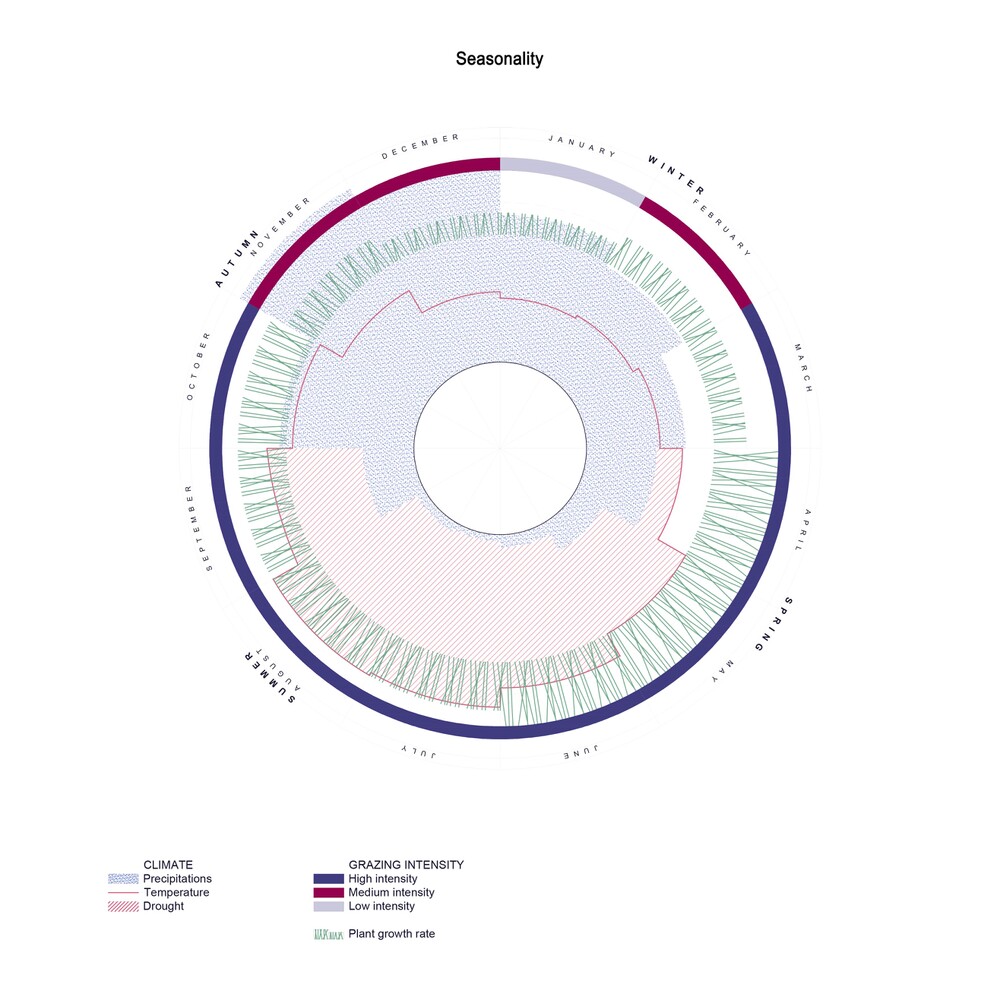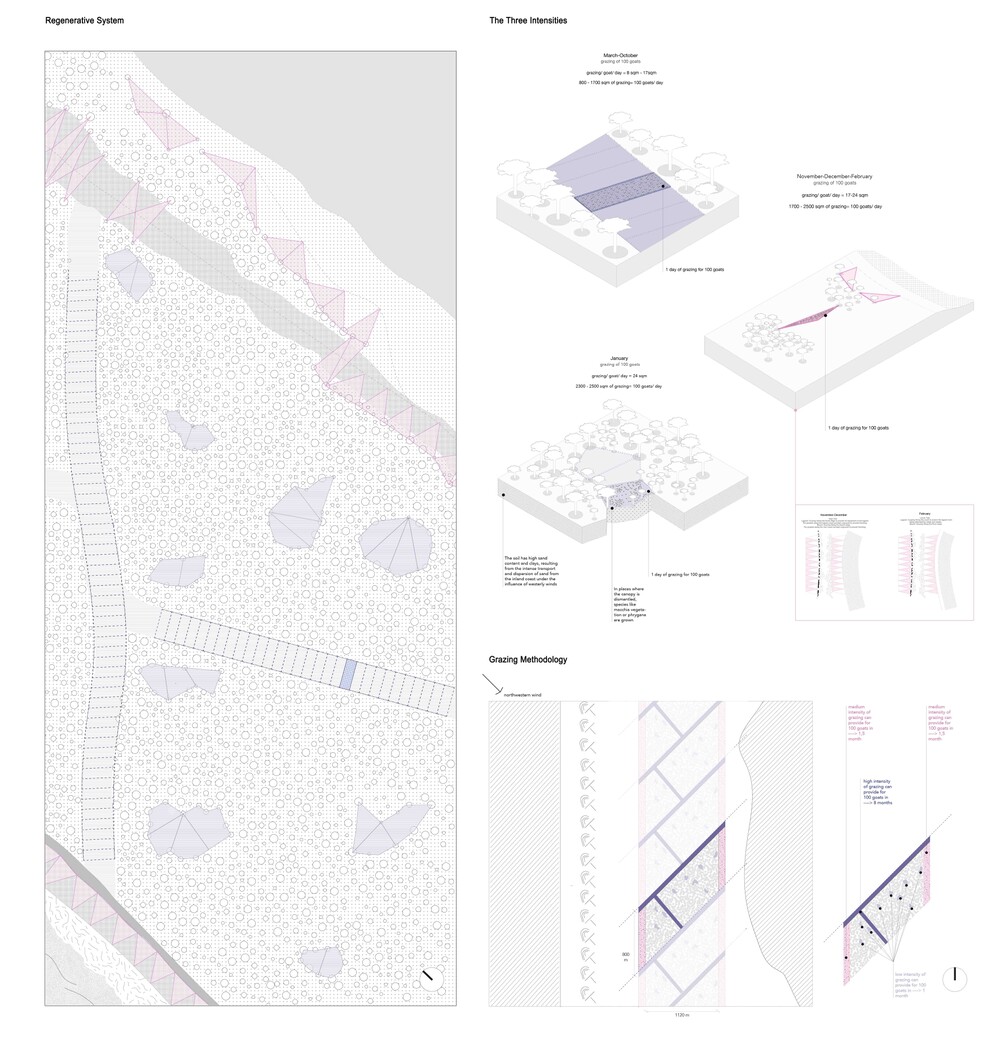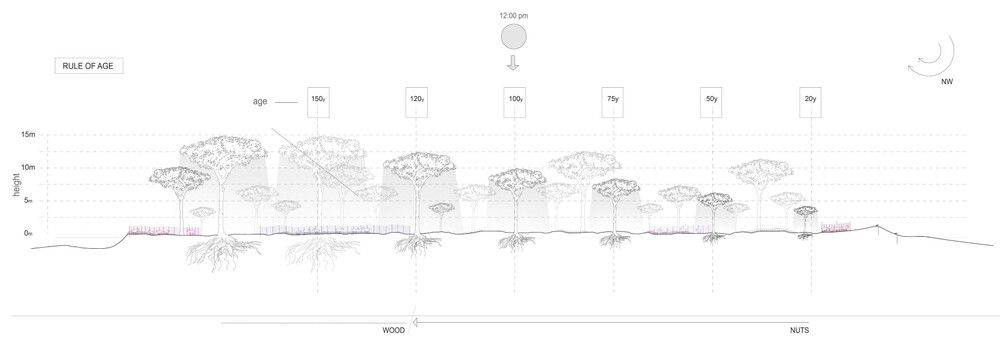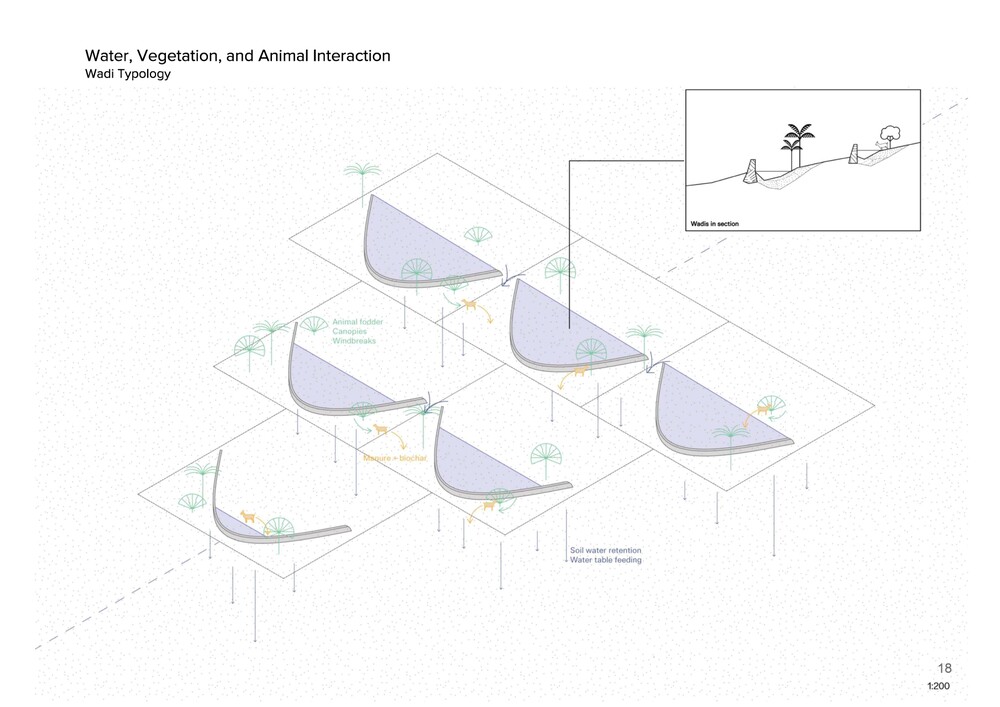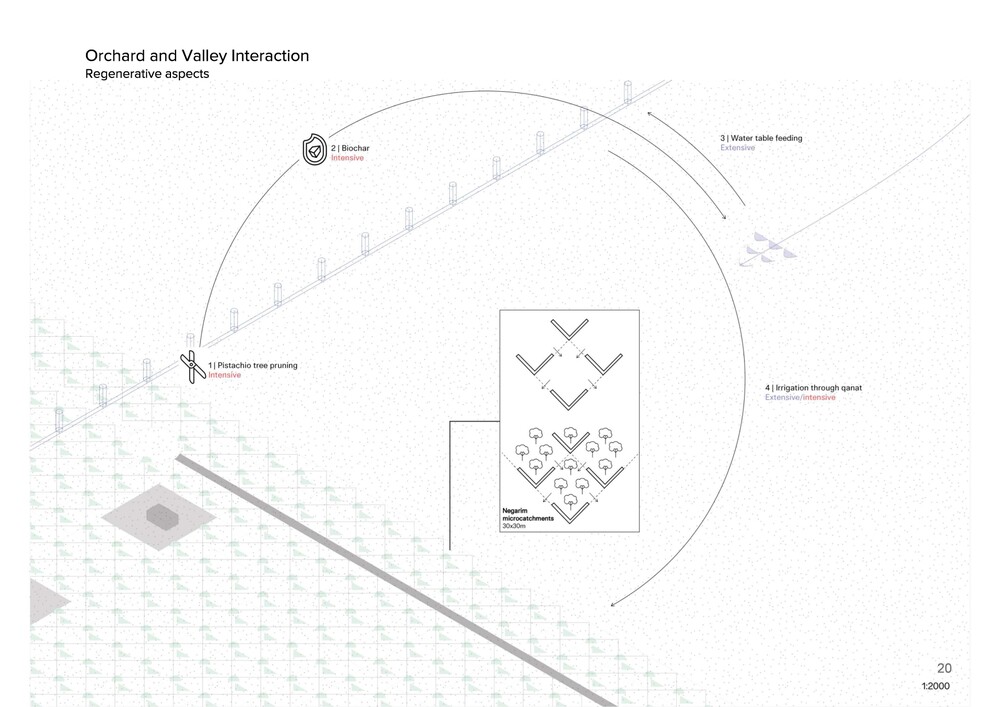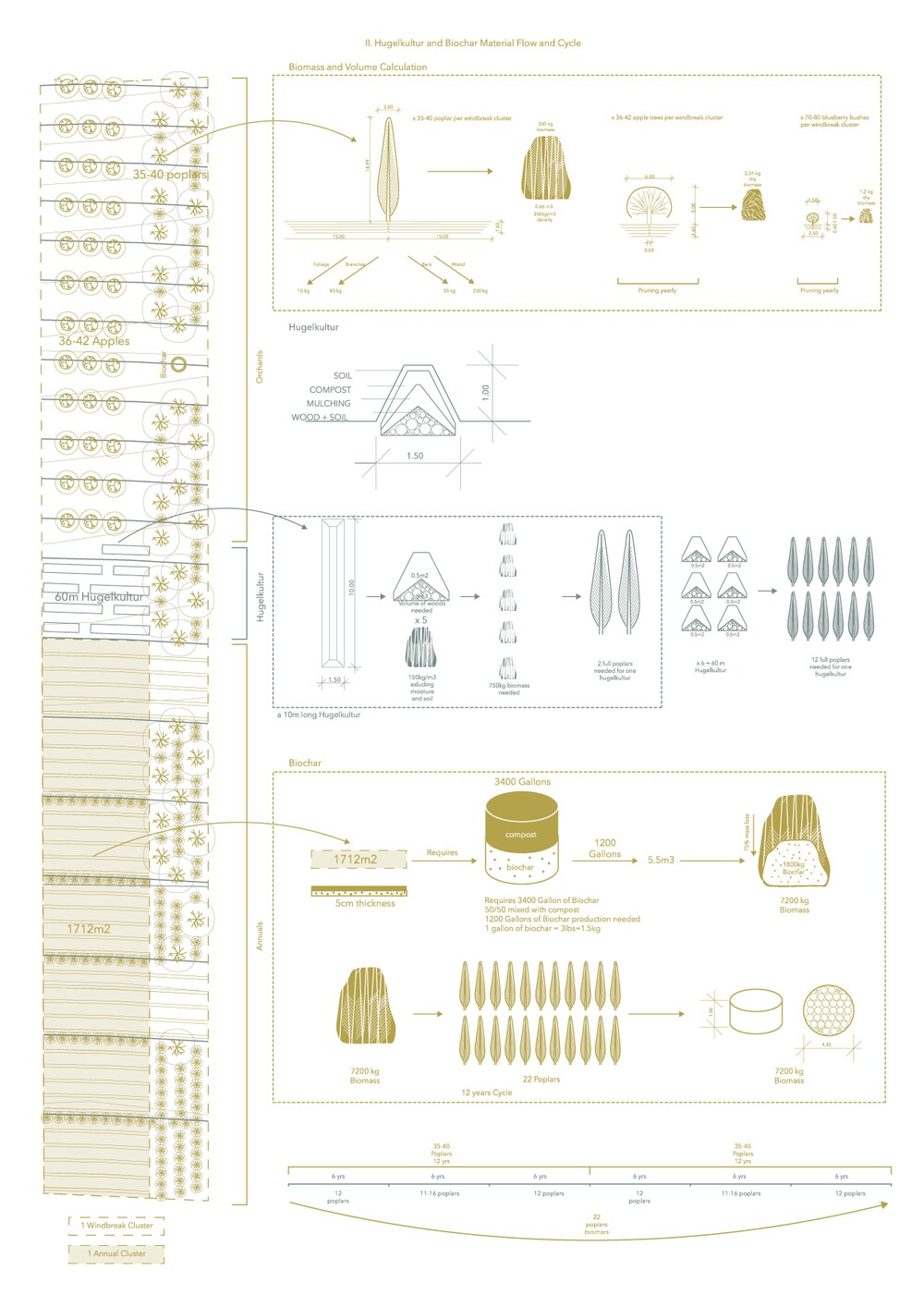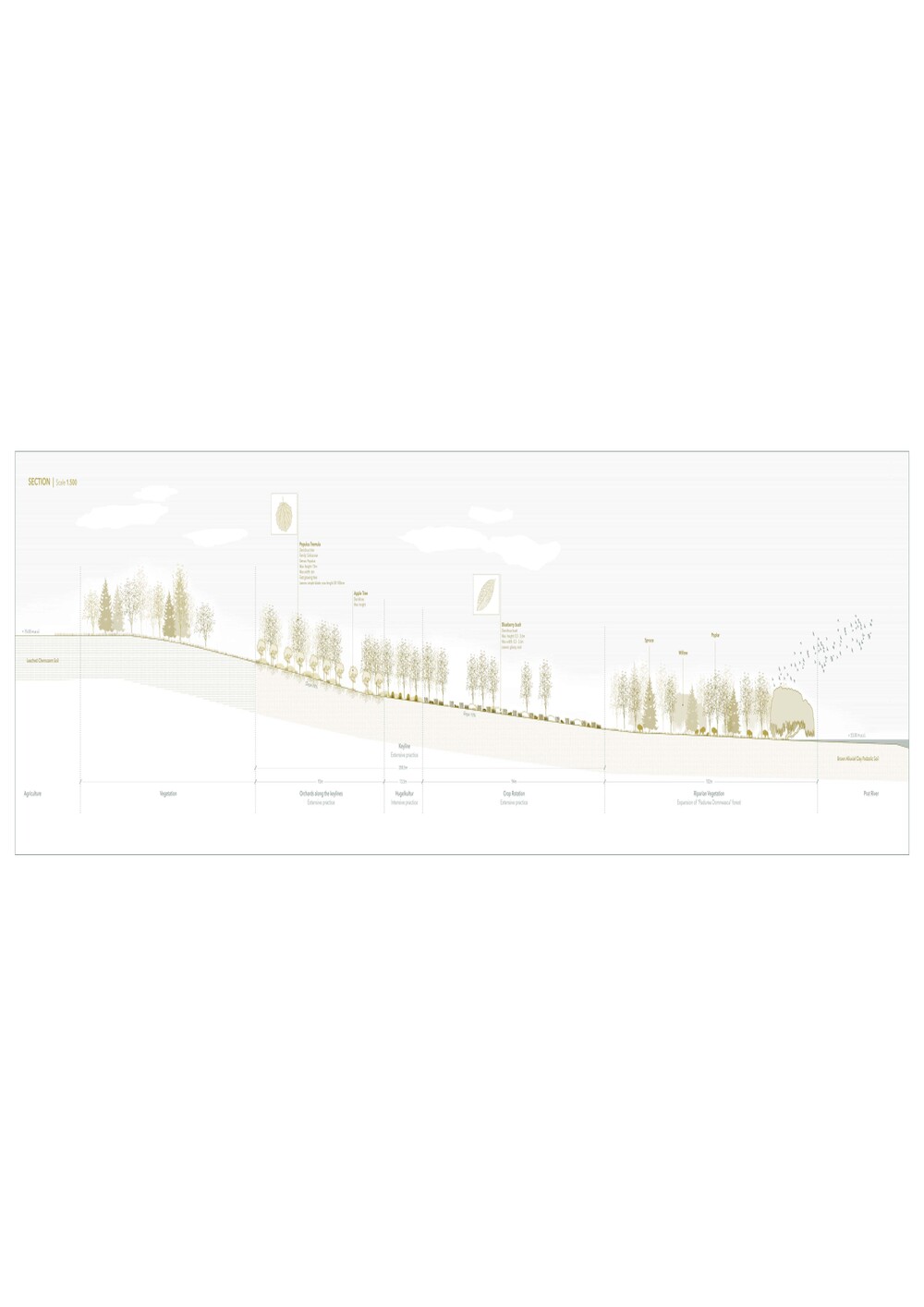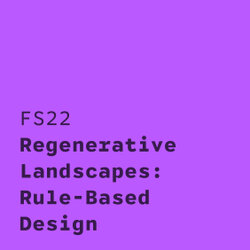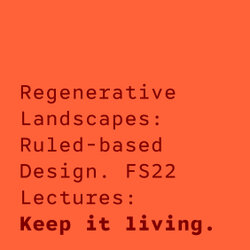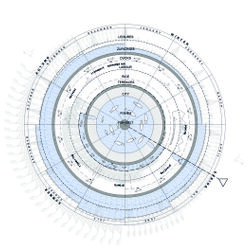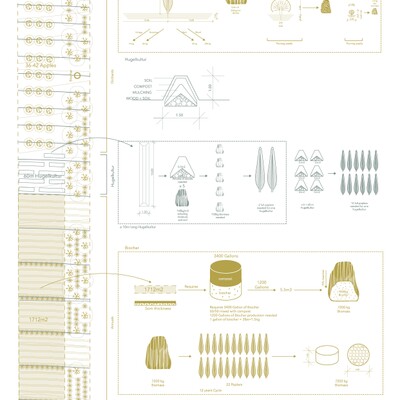
FS22 Regenerative Landscapes: Rule-based Design | Student Projects.
In the new course Regenerative Landscapes: Rule-Based Design, lecturers and students explored regenerative practices for exhausted landscapes. In the respective exercises, the teaching team challenged the students to select a site and apply extensive, intensive, and integrated regeneration practices that would make their site more alive over time. In their drawings, students learned about the scales, logics, and relationships of living systems, as well as the opportunities and challenges of designing a regenerative system from the ground up.
Group 1 explored regenerative practices on the island of Aran in Ireland. Through rational grazing and intensive soil building techniques, the group developed a system for planting small trees on this barren island. Source: Alice Clarke, Michael Fingleton, Akshar Gajjar, Evangelina Kiosse, Simon Orga, Nathalie Peeters, 2022.
Group 2 explored rational grazing techniques on a piece of land covered with pine trees between the sea and the wetlands on the Greek coast. They devised a rule that implies the design of the land: any old pine tree that has become unproductive for nut production will be cut down to create grazing areas for goats. In addition, goats will graze some corridors more intensively to prevent forest fires. Source: Vasiliki Bali, Fanny Christinaz, Georgia Drakou, Anastasios Giannopoulos, Chaido Kaproulia, Fotis Panagopoulos, 2022
Group 3 investigated techniques for water regeneration in Iran based on the legacy of the qanat system. The group proposed integrating keyline technology to better distribute and store the scarce resource of water, which leads to the creation of small wadis planted with drought-tolerant plant species. Ultimately, these wadis are part of a larger regional system of inputs and outputs. Source: Matteo Bischof, Caio de Souza, Amin Eldidi, Sophia Garner, Nima Tabrizi, 2022.
